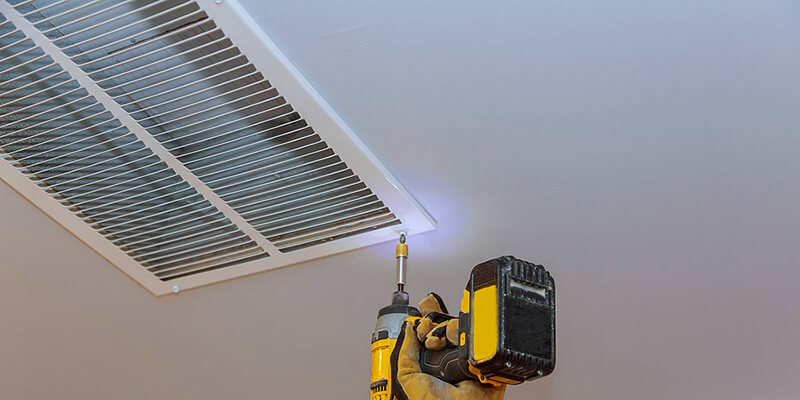Maintaining efficient airflow in your HVAC system requires an accurate return air duct sizing chart. At United Air Duct Cleaning Katy, TX, we understand the importance of precise calculations to ensure optimal system performance. A correctly sized return air duct improves energy efficiency, reduces operational noise, and enhances air quality. Let’s explore why accurate sizing matters and how our services can help.
The Importance of Return Air Duct Sizing
Proper return air duct sizing ensures that the HVAC system receives an adequate volume of air for efficient functioning. Here’s why it’s crucial:
1. Enhanced Efficiency:
A well-sized return air duct minimizes strain on the HVAC system, reducing energy consumption.
2. Balanced Airflow:
Ensures even temperature distribution, creating a comfortable indoor environment.
3. Reduced Noise:
Accurate sizing prevents the HVAC system from overworking, reducing operational noise.
4. Improved Air Quality:
Proper airflow helps maintain clean air by reducing the buildup of dust and pollutants.
Return Air Duct Sizing Chart Parameters
A return air duct sizing chart includes essential parameters to help you select the right duct size. These parameters include:
1. CFM (Cubic Feet per Minute):
Measures the volume of air moved by the HVAC system.
2. FPM (Feet per Minute):
Indicates the air velocity passing through the duct.
3. Duct Material:
The material affects airflow resistance, influencing duct sizing.
4. Duct Shape:
Round, rectangular, or oval shapes impact the duct’s capacity to handle airflow.
Table: Return Air Duct Sizing Chart for Different CFM Values
| CFM Value | Round Duct Diameter (inches) | Rectangular Duct Size (inches) |
| 400 | 8 | 10 x 8 |
| 600 | 10 | 12 x 10 |
| 800 | 12 | 14 x 12 |
| 1000 | 14 | 16 x 14 |
| 1200 | 16 | 18 x 16 |
| 1400 | 18 | 20 x 18 |
Calculating the Right Return Air Duct Size
1. Determine CFM Requirements:
Calculate the HVAC system’s total airflow requirements based on the building’s square footage.
2. Assess Available Space:
Check the available space where the duct will be installed.
3. Select the Duct Shape and Material:
Choose between round, rectangular, or oval ducts and the appropriate material.
4. Refer to the Sizing Chart:
Use a return air duct sizing chart to match the required CFM to the correct duct size.
The Benefits of Accurate Return Air Duct Sizing
Energy Savings:
Efficient airflow reduces the load on your HVAC system, saving energy.
Extended HVAC Lifespan:
Minimizing system strain increases its longevity.
Consistent Comfort:
Balanced airflow maintains even temperatures throughout your space.
Reduced Maintenance Costs:
Proper airflow reduces the need for frequent repairs due to overworking.
Why Choose United Air Duct Cleaning and Restoration Services?
1. Expert Guidance:
We offer professional advice on selecting the right return air duct size for your HVAC system.
2. Accurate Calculations:
Our team uses advanced tools to ensure precise airflow calculations.
3. Comprehensive Solutions:
From duct cleaning to restoration, we offer complete HVAC solutions.
4. Customer Satisfaction:
We prioritize client needs with transparent pricing and tailored services.
FAQs
1. How do I know if my return air duct is undersized?
Signs of an undersized return air duct include loud noises, inconsistent temperatures, and high energy bills. An inspection by our experts can confirm whether your duct is correctly sized.
2. Can I use a return air duct sizing chart without professional help?
While it’s possible to use a sizing chart independently, a professional assessment ensures accurate sizing and eliminates errors, saving you time and potential expenses.
3. What happens if my return air duct is oversized?
An oversized return air duct can lead to reduced air velocity, causing poor airflow distribution and reducing the efficiency of your HVAC system.
4. Do I need separate return air ducts for each room?
Not necessarily. A centralized return air duct can suffice if strategically placed, but individual return air ducts may be needed for improved airflow in larger spaces.
5. How often should return air ducts be cleaned?
Return air ducts should be cleaned every 3 to 5 years. More frequent cleaning may be necessary if you have allergies or live in an area with high pollution.
6. Can improper return air duct sizing cause HVAC malfunctions?
Yes, an improperly sized return air duct can overwork the HVAC system, leading to frequent malfunctions and costly repairs.
7. What is the best material for return air ducts?
Sheet metal is commonly used for return air ducts due to its durability and low resistance to airflow. However, flexible ducts are more suitable for tight spaces.
Trust United Air Duct Cleaning and Restoration Services
For expert return air duct sizing and cleaning services in Katy, TX, rely on United Air Duct Cleaning and Restoration Services. Contact us today to schedule a consultation or visit our website to learn more about our comprehensive HVAC solutions. We’ll help you maintain efficient airflow and optimal system performance.


